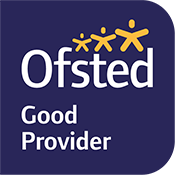Criminology
Criminology subject Intent:
Our intent is comprised of the following 3 sections:
- Our vision for the subject/faculty and the purpose it serves for our pupils
- Defining what the key concepts and core domains of knowledge are, that pupils will learn about
- The end points our curriculum is working towards
- Our vision
- Aspiration –to expose students to potential Career opportunities involved with Criminology related to lessons taught. To offer a range of Aspirations linked to criminology in the UK and the world. We provide opportunities for students to articulate their opinions via class discussions and analyse media sources so that they can gain confidence to stress their ideas appropriately.
- Core knowledge – students are taught about the theories of criminality and the changing awareness of crime in year 12 and in year 13 they are taught about the process from the crime scene to the court and crime & punishment.
- Skills –The subject of Criminology should inspire. Students are taught topics to inspire awe and wonder. Pupils will learn about social norms and values and what role they play in society. Criminality- what it is, why people commit crimes and what they have done to explain criminality in society. Change over time and the skill of being able to recognise how things have changed based on the study of ideas and events. Perspectives- how people experience and view criminality. Empathy and being able to understand another person’s views. Significance- how do we judge this and students must attempt to determine relative significance of theories of criminality influencing policy development.
- Developing cultural capital –Learning about criminology in a classroom is one thing. Experiencing criminology by taking day trips to local magistrates courts and crown court. The Students will participate in Zakon Training LTD who will teach the students about forensic procedures and employability skills.
- Developing character – enabling our students to RISE. In particular developing our Core Values of:
- Respect- Criminology teaches students about periods of time when certain groups were marginalised and oppressed and how this links to changes in social attitudes and norms
- Independence- Criminology teaches students the skills of independent research, the excitement of a student discovering information for themselves and sharing this with the class. The students will have to review news stories and how we can explain the events using criminological theories.
- Service- Criminology teaches students about those that have created criminality theories in the past and the impact their theories have had on society today and how we can continue to serve our communities
- Empathy- Criminology is intrinsically about learning from other people’s experiences and perspective. Students placing themselves in the ‘shoes of others’ This is taught throughout our curriculum.
- Identifying and addressing context specific need – Students studying Criminology are offered pastoral support through the Sixth Form team (Head of Year, Deputy Head of Year and form tutors) and academic support from their subject tutors alongside the Aspiration and Careers Lead and Prospects Careers Advisor. Those students with specific learning need are encouraged through the work of the SENDCo and the learning support team within the academy. For those students with limited financial means needing additional support the Pupil Premium fund and UniConnect funding is sought to help with ensuring they benefit from the same opportunities as other students within the cohort. Subject-specific support from class teachers enables all students to achieve and challenge themselves to do more including one-to-one guidance and individual / paired or group tasks .
.
- Learning is sequential – Criminology is only taught in Year 12 and 13, therefore, there is no criminology content (knowledge and understanding) at G.C.S.E. to build upon. However, the skills taught in Key Stages 3 and 4 Humanities courses (History, Geography and Religious Studies) are fundamental to understanding the topics addressed within Criminology. Prior knowledge and retrieval practice are embedded in criminology lessons using the Do Now Activities (last week, last term and last year) allowing knowledge to be built upon and more easily accessed through dual coding, vocabulary practice and exam skills as appropriate. Lessons are planned to develop both skills and knowledge from the Humanities courses at Key Stage 4 and across the curriculum with courses available at Level 3 including Psychology and sociology.
- Our key concepts and core domains of knowledge
At Key Stage 5, learners will study Criminology (WJEC). Over the two years of the course, learners will study:
Unit 1: Changing awareness of crime
Unit 2: Criminological theories
Unit 3: Crime scene to the Court room
Unit 4: Crime and Punishment
- The end points of our curriculum
By the end of each year our learners will be able to:
|
Year 12 (Unit 1 and 2) |
Year 13 (Unit 3 and 4) |
|
Unit 1:
Unit 2
|
Unit 3
Unit 4
|







